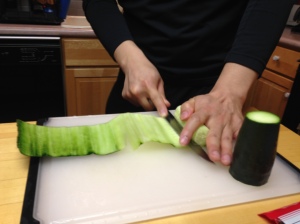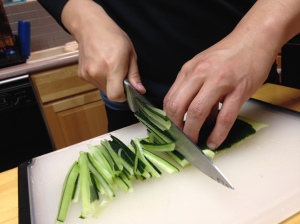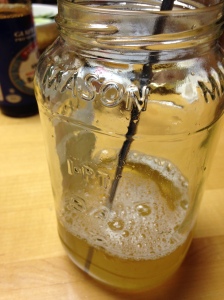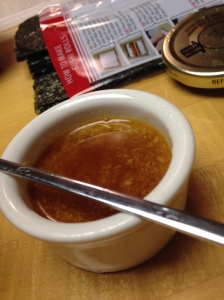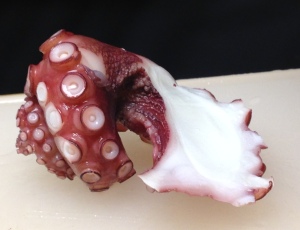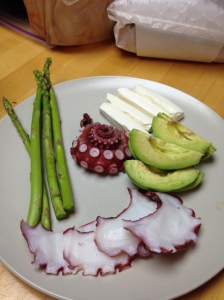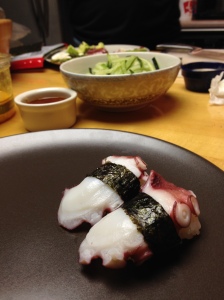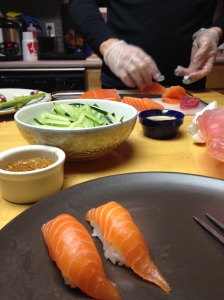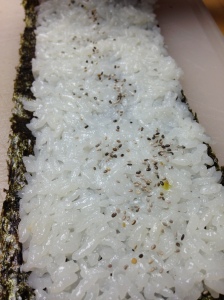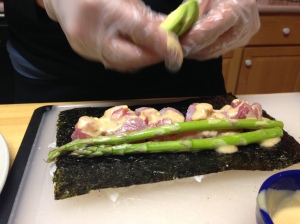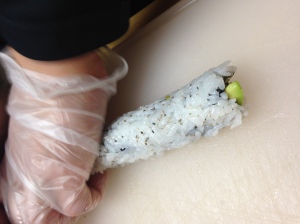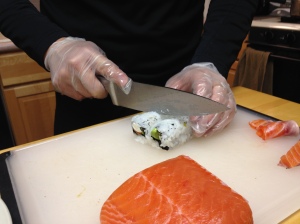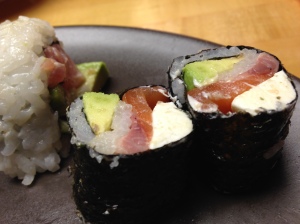I was rummaging through the Toronto Archives and saw these really great vintage photos of Spadina street in 1957. Toronto, my hometown, has a history that has always interested me. Both my mother and father grew up there and I’ve heard countless stories about Kensington market, the rags and bones man and even the shoeshine boy.

These snapshots (and the one below of the shoeshine boy) take me back a few years to when I wrote this article, originally published by A Canadian Curriculum Theory Project, titled:
Trans/forming Life into Narrative: Auto/biography as Currere

My jaw dropped and eyes widened as Nadine[1] shared part of her shocking life narrative as a child immigrant. “I can remember crouching under the kitchen sink with my cousin. We held our hands over our ears as the bombs went off,” she said. I had been friends with Nadine for nearly six years. I had asked her to participate in a small research project on child immigrants for a course I took at York University. This was the first time that I heard of her struggle. Nadine and her family are from Lebanon. Her father came to Canada with a few dollars, began working at Pizza Pizza, and slept on park benches for months until he could afford to send money for the rest of the family to join him. Nadine retells her experiences in school. Before coming to Canada she attended a school run by nuns. She challenged authority by buying candy from outside the school because it was cheaper and when she was caught, was forced to kneel on rocks and endure painful slaps with a wooden panel. When she came to Canada her first grade teacher bought her a winter jacket because she could not afford one. As a child immigrant she faced much adversity[2]. “Why had I not been aware of this until now?” I thought.
In turning to Carl Leggo’s (2010) “Writing a Life: Representation in Language and Image” some of my questions are answered: inquiry and reflection are essential in telling our stories, as well as having our stories heard. Leggo writes beside a hospital bed, with little time left, and eagerly listens to his father’s life stories. However, as Leggo delves deeper into his father’s memories, death creeps up quickly and a brain tumour takes his father’s life. Leggo’s poetic and touching work ensures that his father’s life story remains, even though he is no longer here. I tear up as I read each of Leggo’s ruminations, considering the time and opportunity I had taken for granted, never fully hearing my grandmother’s story before her death in 2009. We need not wait for a ‘right time’ because that time may never come.
Leggo suggests that we story ourselves (p. 47). His memories are half real and half made up experiences, which are trans/formed into poetic verse. I often joke about my Italian grandmother and her stubborn, yet endearing, character. Well into her eighties she still continues to make tomato sauce, manage the garden and lecture her five sons. When I project her story, I understand that I am retelling the half-real and half-made up interpretation that I have of her. My close relationship with my grandmother, however, is unique because I listen. I sit and listen to her escapades in the village as a young girl. I hear about her ongoing memories of food and family. While these stories have grown to bore many of my family members I always find them to be intriguing, imagining my life as a twenty-five year old woman during her time. Initially the stories seem boring, but as she digs into her past, beautiful treasures unfold.
Recently, I have come across albums of photos on a Facebook group called ‘Vintage Toronto’. One image, Shoeshine Boy (appendix), sparks my immediate interest. A Facebook user comments on the post, asking if the image is of a boy who was murdered on Yonge Street in 1977[3]. I distinctly remember my parents discussing this and my father mentioning that he had been a shoeshine boy. I spend hours scrolling through hundreds of photos and send them to my parents. They reply via email with an attempt to share their snippets of past memories, but I realize that this inquiry is an ongoing process and I always feel that there is another story or memory that will eventually emerge. I feel as though my narrative is constantly unfolding and I must, through currere, recursively reflect (Ng-a-Fook, 2011).
Since “the study of currere… involves the investigation of the nature of the individual experience of the public: of artifacts, actors, operations, of the educational journey or pilgrimage” there are many questions we must work to answer surrounding the nature of our educational experiences (Pinar 1975/2000, p. 390-391, as cited in Ng-a-Fook, 2012). This type of life writing, of recursive questioning, is essential for interpreting our familial relationships.
Earlier in this course, presenter Barbara Brockman made us aware of the benefits of oral histories and how they can be incorporated into practice. During the presentation, Brockman elaborated on so many incredibly fascinating stories that her students wrote about. We should inquire and we should be willing to share our stories and experiences. In these stories we can transform perception into understanding and judgment into peace. “In order to live with wholeness and love in the world,” as Leggo (2010) reminds us, “we need an ongoing commitment to exploring the places of dreams and visions, including the precocious psyche, the inimitable imagination and the ineffable heart” (p. 54).
Leggo argues that a curriculum of love is essential. It involves living poetically, honing our imagination and creativity (Leggo, 2005, Leggo, 2010). Similarly, Dewey suggested at the turn of the last century that “the imagination is the medium in which the child lives” (1909, p. 61). Therefore, personal narratives have an important place in school curriculum, not only in the Language Arts classroom, but spanning across all disciplines. But what is this curriculum of love? Perhaps it is an avenue within the multifaceted, yet topographic, field of curriculum studies which involves more exploration. I wonder if this curriculum of love is part of the null curriculum, one which is never taught. Ng-a-Fook’s recollection of being othered on the schoolyard (2012, p. 175) allows me to reconsider my own educational experiences where (my understanding of) Leggo’s curriculum of love was completely obsolete.
Though a/r/tographic research I desperately want to answer many of Pinar’s curricular questions (as cited in Ng-a-Fook, 2011, p. 7). But often, I think my stories may be considered petty and unnecessary. Chambers (1999) suggests that “… as Canadians, we may not recognize our own… uniqueness – our own curriculum and its theory – even when we are living in the midst of it” (p. 140). Nadine and many other Canadians are called to tell their stories. Stories can write history books, create curriculum policy and control our lives. Autobiographical narratives guide us to question and understand our place and identity. In an attempt to advocate voice and diminish silences, educators must facilitate a learning environment which enables students to write, share, constantly reflect on and often revisit their life narratives.
References
Chambers, C. (1999). A topography for Canadian curriculum theory. Canadian Journal of Education, 24(2), pp. 137-150.
Dewey, J. (1902/1990). The School and Society, pp. 6-178. Chicago: University of Chicago Press.
Leggo, C. (2005). The heart of pedagogy: On poetic knowing and living. Teachers and Teaching: theory and practice, 11(5), pp. 439-455.
Leggo, C. (2007). The syntax of silence. JCACS (Journal of the Canadian Association of Curriculum Studies), 5(1), 94-101.
Leggo, C. (2010). Writing a life: Representation in language and image. Transnational Curriculum Inquiry 7(2) http://nitinat.lubrary.ubc.ca/ojs/index.php/tci.
Leggo, C. (2011). Living love: Confessions of a fearful teacher. JCACS (Journal of the Canadian Association of Curriculum Studies), 9(1), pp. 115-144.
Ng-A-Fook, N. (2011). Provoking a Canadian curriculum theory project: A question of/for currere, denkbild and aesthetics. Media: Culture: Pedagogy, 15 (2), (pp. 1-26).
Ng-A-Fook, N. (2012). Navigating m/other-son plots as a migrant act: Autobiography, currere, and gender. In Stephanie Springgay and Deborah Freedman (Eds.), M/othering a bodied curriculum. Toronto, Ontario: University of Toronto Press.
[1] Pseudonym used
[2] Nadine will write her BAR exam this year. Her family owns a successful Lebanese bakery in Vaughan.
[3] The boy was twelve year old Emanuel Jaques: http://en.wikipedia.org/wiki/Emanuel_Jaques





























